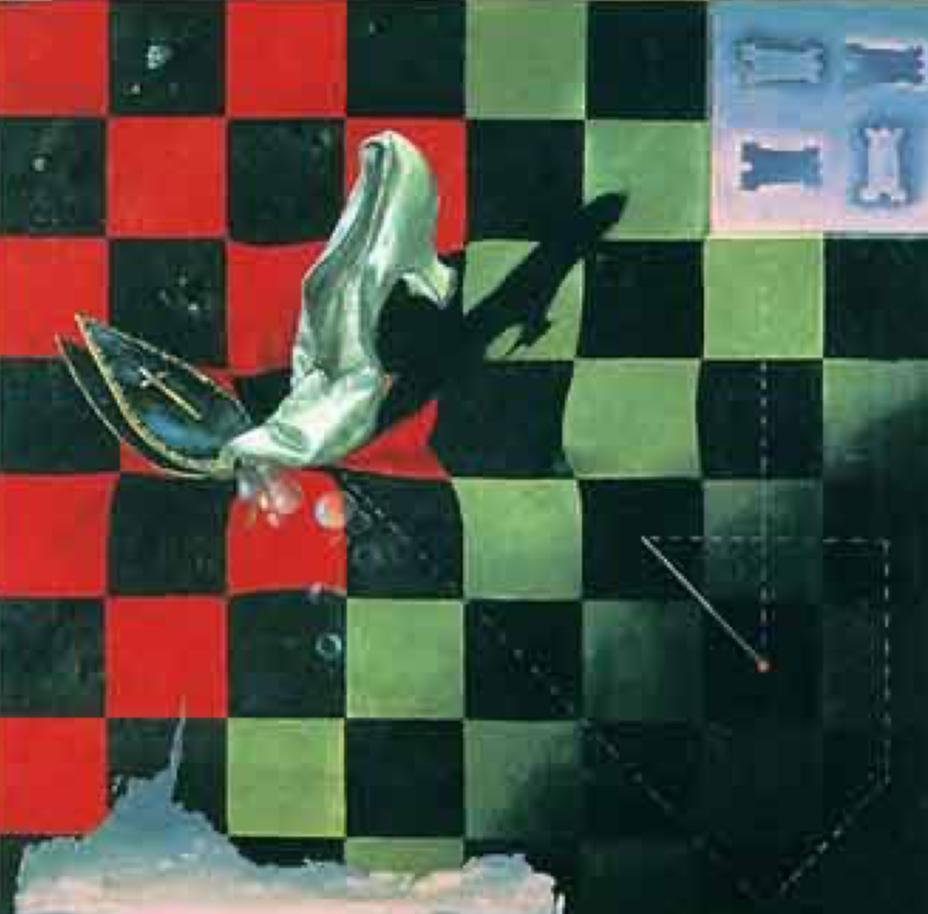When Silence Commands the Room
In a week marked by caution and recalibration in the global art market, a single painting by Dorothea Tanning reshaped the conversation. Endgame didn’t just set a record—it signaled a deeper shift within the world’s top auction houses. A lucid analysis of value, strategy, and the new language of collecting.
ART & FINANCE
Charlotte Madeleine CASTELLI
7/29/20253 min read


A Record in the Shadows of Surrealism: How Dorothea Tanning Quietly Redefined the Market This Week
In the fluctuating topography of the global art market, every so often a sale emerges not merely as a financial benchmark but as a quiet reorientation of cultural and historical value. This week, such a moment occurred at Christie’s New York, where Endgame (1944), a psychologically charged canvas by Dorothea Tanning, was acquired for $2.34 million—far surpassing its pre-sale estimate of $1.5 million and securing its place as the most significant transaction in the art world over the past seven days.
Long regarded as an enigmatic figure within the Surrealist movement, Tanning's work has only recently begun to receive the critical and commercial recognition it commands. With Endgame, she delivers not just a painting but a vision: a dreamscape rendered with exacting detail, where a chessboard becomes a stage for metaphysical conflict, intimate identity, and the quiet assertion of feminine autonomy. The canvas functions as both a historical artifact and an unresolved equation—and in the current climate, it speaks louder than ever.
The sale marks a turning point in how value is articulated and absorbed in the upper tier of the art market. While blockbuster prices for blue-chip artists have traditionally dominated headlines, recent data reveals a subtle, yet critical contraction in ultra-high-value sales. In 2024, transactions above the $10 million mark declined sharply, falling by over 45% compared to previous years. This softening is not indicative of collapse, but rather recalibration. Buyers are no longer indiscriminately chasing names; they are seeking works with conceptual rigor, historical importance, and curatorial potential.
This shift is reflected in the internal dynamics of the world’s major auction houses. Christie’s, Sotheby’s, and Phillips—long considered the holy trinity of art-market infrastructure—have each adopted new strategies to weather the changing climate. Christie’s, bolstered by its private sales division and increased integration of technology (particularly through their immersive digital catalogues), has leaned into cross-category curation. The sale of Tanning’s Endgame took place within a tightly edited evening sale focused on mid-century and postwar breakthroughs, where narrative cohesion was prioritized over maximalism.
Sotheby’s, now under private ownership following its 2019 acquisition by Patrick Drahi, has made aggressive investments in both digital innovation and financial services. Their art-finance arm now operates with the efficiency of a boutique bank, offering bespoke solutions to clients looking to leverage collections without liquidating them outright. Yet this new financial sophistication has also introduced a colder calculus into the house's operations—where lending values, resale guarantees, and fractionalization increasingly shape the architecture of the sale room.
Meanwhile, Phillips, once seen as a more agile player focused on emerging talent and cutting-edge contemporary, has found itself in a transitional phase. With the expansion of its Asian operations slowed by macroeconomic pressures in China and South Korea, the house is now recalibrating its Western strategy—doubling down on secondary-market icons while cautiously rebuilding confidence among collectors of new media and digital works.
Despite these headwinds, the three houses continue to define the global art economy—yet their dominance is no longer unquestioned. A new ecosystem is taking shape. Private sales, dealer-driven platforms, and curated online fairs are now absorbing a significant portion of transactions that once belonged exclusively to the auction block. The Tanning sale, though spectacular, stands as an exception in a market increasingly leaning towards discretion, strategic acquisitions, and long-tail value rather than instant visibility.
New York, however, remains the gravitational center of this transformation. The city continues to command more than 90% of the U.S. market share for high-value auctions and acts as the primary laboratory where the most experimental curatorial formats are tested—often before being replicated in London, Paris, or Hong Kong.
In this context, the unexpected triumph of Endgame is far more than a solitary success. It is a symptom of something deeper: the market’s desire to realign itself with works of substance—pieces that carry within them not just pigment and provenance, but the weight of history and the pulse of unresolved thought. Tanning, whose oeuvre was once overshadowed by the louder voices of her male contemporaries, has returned not just with a price, but with an idea: that nuance, imagination, and quiet rebellion still have currency—and perhaps now, more than ever.
The game, as it turns out, is not over. It’s just begun again—on different terms, under quieter rules, but with stakes that feel more consequential than ever before.
© Charlotte Madeleine Castelli | All rights reserved
